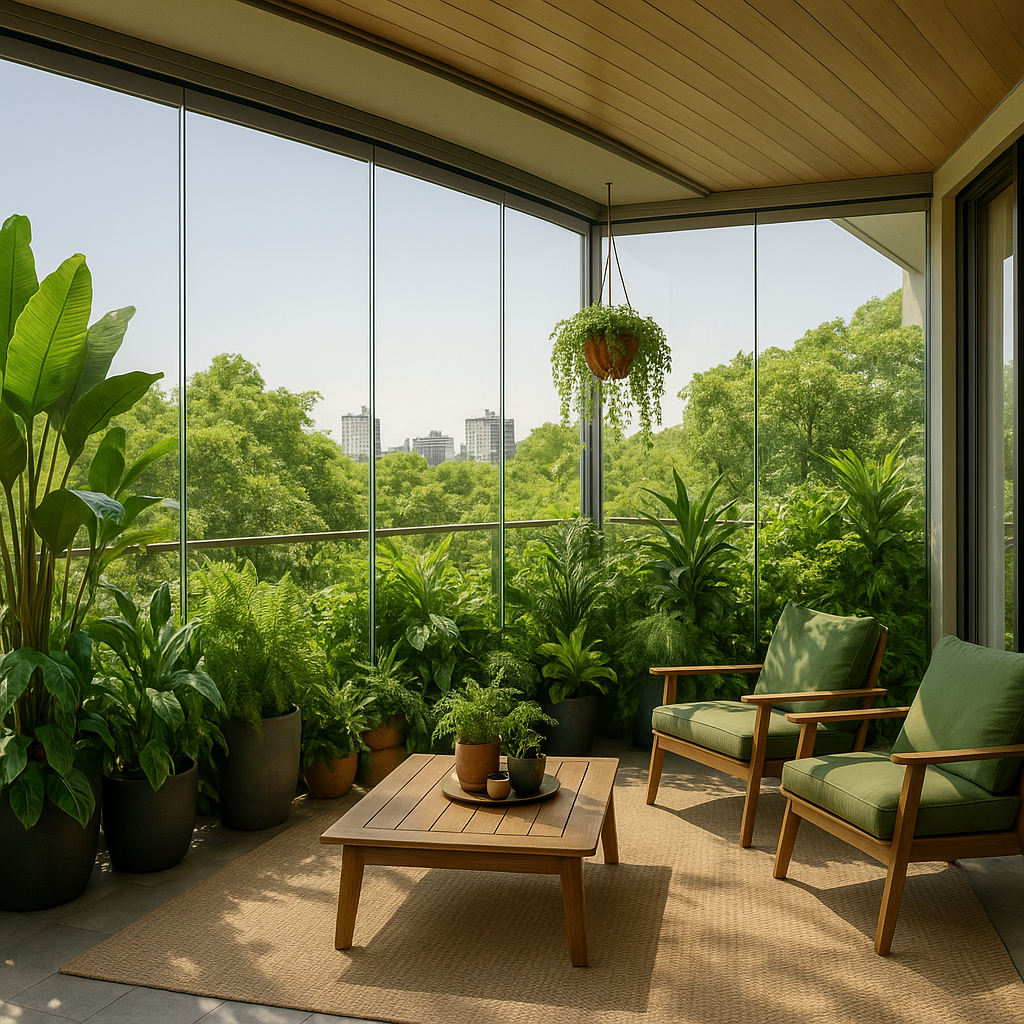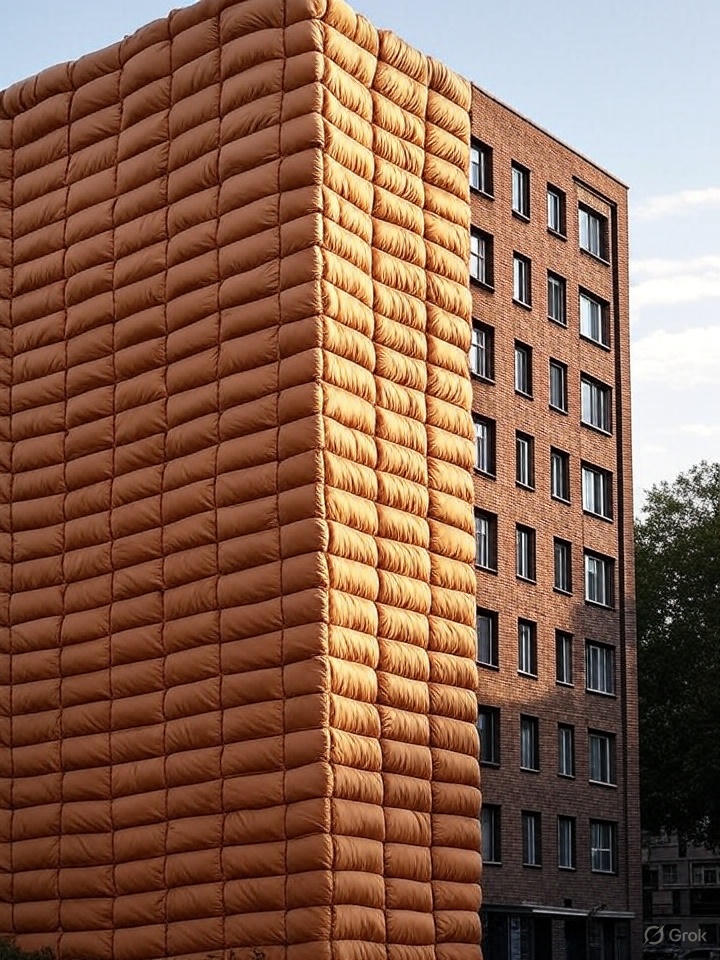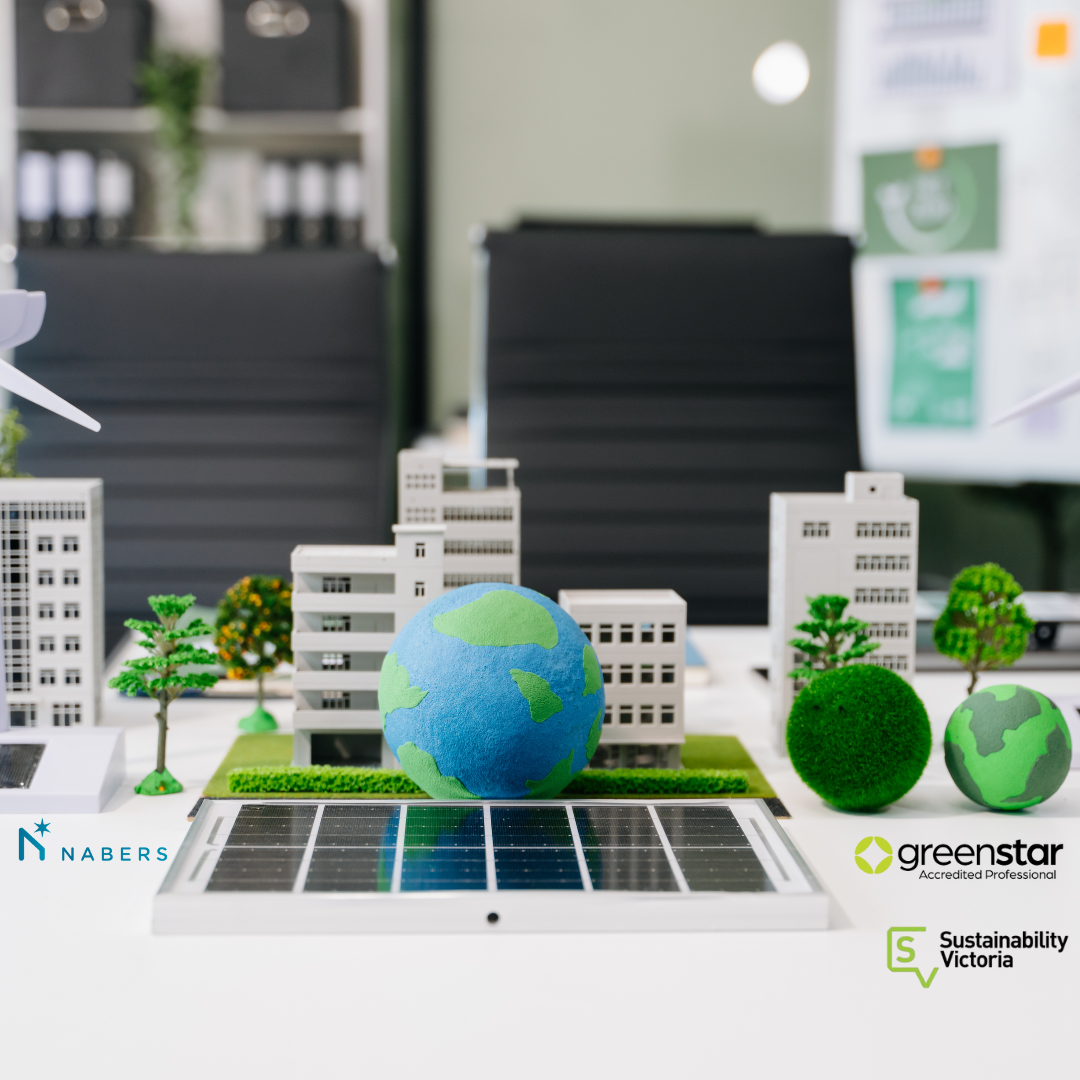Building Energy Efficiency via Adaptive Balcony Design

How retractable glazing transforms balconies into sustainable design assets.
Improving building energy efficiency is one of the biggest levers developers and architects have to reduce operational costs, improve comfort, and lower emissions.
With adaptive glazing systems applied to balcony design, these semi-outdoor zones shift from being energy liabilities into performance assets.
In this page, you’ll see how passive design principles, smart orientation, and material choices combine to deliver measurable efficiency gains — within a Green Star–aligned framework.
Why Balconies Matter for Energy Efficiency and Green Star Design
Across Australia’s cities, apartment living has replaced the traditional suburban home. For many, the balcony is their backyard in the sky—the only private outdoor space they have. Yet too often, these spaces are windswept, noisy, or underused, offering little comfort or climate value.
Transforming balconies into adaptive climate hubs changes that entirely. When enclosed with retractable glass systems, they evolve from wasted outdoor space into a year-round lifestyle zone and a key contributor to building energy efficiency.
Balconies enclosed with operable glazing systems:
Shield living areas from wind, rain, and heat loss
Reduce energy consumption through passive thermal buffering.
A good balcony design allows fresh air and light in summer through natural ventilation.
Support Green Star rating criteria for comfort, daylight, and sustainability.
Green Star Pathways: How Adaptive Balconies Tick the Boxes
Green Star – Design & As Built and Green Star – Communities both assess performance across multiple categories. Operable balcony glazing helps buildings meet credit requirements in the following areas:
Light Quality
Frameless glass preserves daylight access while providing protection from harsh conditions. Unlike blinds or fixed screens, operable glass retains the natural connection between indoors and outdoors, aligning with Green Star credits for natural light and visual comfort.
Responsible Finishes
Clear Edge systems are built with recyclable aluminium and glass.Recycling aluminium saves up to 95% of the energy used in virgin productionRecycling glass conserves 20–30% of energy and reduces raw material demand
Acoustic Comfort
Balcony glazing significantly improves acoustic insulation, softening external noise from traffic and neighbours. This enhances the building’s indoor environmental quality, which contributes to Green Star’s acoustic comfort pathway
Energy Use and Performance
International studies confirm that enclosing balconies can significantly cut heating energy demand.. Retractable systems allow for passive ventilation, avoiding overheating and reducing cooling demand in warmer regions.

Research-Backed Results: The Evidence Supporting Adaptive Balcony Design
At Clear Edge Glass, we don’t make vague claims about energy savings or sustainability.
Our conclusions are grounded in real, peer-reviewed international research—the same data that underpins our CPD- presentation (informal) and white paper, The Hidden Climate Opportunity: How Retractable Balcony Glazing Can Drive Energy Efficiency in Australia’s Built Environment.
Across Europe and North America, independent field studies and simulation models consistently show that enclosing balconies with retractable glass systems delivers measurable, repeatable results in building energy efficiency, occupant comfort, and climate resilience.
Below are several of the most significant international studies, demonstrating the real-world energy performance benefits of adaptive balcony glazing.
Finland
Glazed balconies maintained temperatures 5°C warmer than outside, cutting heat loss by 10–20% during winter months.
Source: Hilliaho et al., 2016
Spain
Retrofitting balconies with retractable glazing reduced annual heating demand by 58%, while maintaining comfort through natural ventilation in summer. Source: Sabatell-Canales et al., 2023
Nordic & Toronto Studies
Adaptive balcony systems delivered up to a 60% reduction in heating energy demand, improving indoor comfort and stabilising temperatures year-round. Source: Jørgensen et al., 2020; Kesik, 2022
Australian Context
When applied locally, these results indicate potential 10–20% winter heating savings in southern cities like Melbourne, and up to 10% lower cooling loads in warmer regions such as Brisbane and Perth.
The Passive Design Advantage
Adaptive balcony glazing aligns perfectly with passive design principles—capturing solar warmth in winter and allowing cross-ventilation in summer. This dual benefit enhances both comfort and efficiency without compromising architectural intent.
Indoor Air & Ventilation Quality
Retractable balcony glazing allows natural airflow, improving indoor environmental quality. When opened, the system restores cross-ventilation and supports passive design principles that minimise mechanical cooling needs.
Orientation & Solar Control
North-facing balconies collect warmth in winter; east and west need shading for low-angle sun; and south-facing areas benefit from wind protection. Orientation is your first design decision for energy performance.
Material Durability & Maintenance
High UV and salt exposure require durable, sustainable materials. Clear Edge Glass uses marine-grade aluminium and stainless steel hardware—fully recyclable and aligned with Green Star’s Responsible Finishes criteria.

Retrofitting for Existing Buildings
Frameless retractable systems can be installed without altering building structure, making them ideal for strata retrofits.
They enhance energy efficiency, weather protection, and usability—while maintaining visual uniformity and compliance with Australian Standards.
Retrofit Benefits
-
Low-impact installation: No structural modification required.
-
Energy gains: Up to 20% reduction in heating energy.
-
Compliance-ready: Fully tested to AS1288 and AS2047.
For Architects & Developers
Integrating retractable glazing at the design stage avoids post-construction retrofits, maintains façade uniformity, and increases property value—creating a compelling sustainability story for project marketing.
Retrofit Solutions for Existing Buildings
Energy Upgrades Without Major Works
Retractable systems are non-structural, compliant, and reversible—ideal for strata and Owners Corporations seeking to improve building efficiency without triggering development approvals.
Supported by Government Policy
State programs like Sustainability Victoria and NSW Strata Hub increasingly recognise retrofit projects that improve energy efficiency and Green Star performance
Take the Next Step
Learn how Clear Edge Glass can help you design energy-efficient, sustainable living spaces that meet Green Star and Net Zero goals.
Explore Further
Fill in the form and
-
Request: The Hidden Climate Opportunity White Paper
-
Book: a CPD presentation for your architectural team – Fill in the Form
-
Discover: How balcony design drives performance, comfort, and value by contacting to us.
- Explore: Our home page to see all our frameless glass door options.
